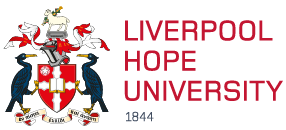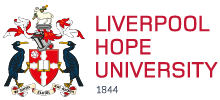Dr Stephen Kelly, Senior Lecturer in Modern History, reflects on the legacy of the late Martin McGuinness.
The death of Martin McGuinness, terrorist turned peacemaker, at the age of 66, marks a turning point in Irish history. Already, news of McGuinness’s death has witnessed a plethora of journalists, politicians and historians, fall over each another to assess McGuinness’s legacy. From Provisional Irish Republican Army (PIRA) commander on the streets of Derry during the early 1970s, to deputy first-minister of Northern Ireland from 2007 to 2017, McGuinness’s transition from Republican extremist to respected (and in many quarters admired) politician is extraordinary.
Many have been quick to point out McGuinness’s positive contribution to the Northern Ireland peace process during the 1990s, which was defined by the signing of the Good Friday Agreement in 1998. Few can argue that McGuinness’s unique ability to convince many diehard Republicans to end their ‘long war’ against British rule in Northern Ireland, to lay down their arms and agree to work within the confinements of the once hated Northern Ireland state, was remarkable.
British Prime Minister Theresa May said that McGuinness played a defining role in moving Republicans away from violence.[1] Irish Taoiseach (prime minister) Enda Kenny described McGuinness as a ‘tireless and committed champion of the Peace Process’.[2] Indeed, Ian Paisley Jnr, son of the late Ian Paisley Snr, paid his respects saying: ‘It’s not how you start your life, it’s how you finish your life’.[3] Indeed, it would be disingenuous not to pay tribute to McGuinness’s role in helping to take the gun out of Irish politics.
However, we should not forget McGuinness’s early life. He was responsible, either directly or indirectly, for the murder of many innocent people on the island of Ireland and mainland Britain. During the 1970s and 1980s (some argue into the 1990s), he was a leading figure within the PIRA, sitting on its army council. Despite McGuinness’s insistence that he left the movement in 1974, this claim has long been disputed by some of his former Republican comrades, who allege that he rose up through the organisation’s ranks to become joint chiefs of staff of the PIRA (alongside Brian Keenan) in the late 1970s.[4]
McGuinness joined the Official IRA, first, when the Troubles erupted in his native city of Derry in the summer of 1969. But, when the movement failed to take decisive action against the British Army and police force, he jumped ship to the then embryonic PIRA. Following the disastrous British government policy of internment in 1971, the fortunes of the PIRA were transformed. The Derry PIRA quickly took over the Official IRA in size and capacity for violence.[5]
In 2001, during the Saville Inquiry in to the Bloody Sunday killings of January 1972, McGuinness admitted that he was second in command of the Derry PIRA during the early 1970s.[6] In recognition of his growing status and influence within the PIRA, in July 1972, alongside Gerry Adams and Ivor Bell, McGuinness held secret talks regarding a possible PIRA ceasefire with secretary of state for Northern Ireland William Whitelaw. The following year, in 1973, McGuinness was arrested in a car carrying 113kg of explosives. He was convicted at the Special Criminal Court in Dublin, which sentenced him to six months. McGuinness was rearrested in 1974, charged with PIRA membership, convicted and once more imprisoned.[7]
Despite McGuinness’s repeated assurances that he left the PIRA in 1974, the truth is that in the aftermath of the La Mon House Hotel bombing by Republicans in February 1978, he was appointed, together with Brian Keenan, as joint chiefs of staff of the PIRA.[8] From this moment onwards McGuinness worked tirelessly to reform and rejuvenate the PIRA (by this time the movement was riddled with informers, poorly organised and lacked morale).
During the early 1980s, in his efforts to increase the killing capacity of the PIRA, McGuinness went on a number of fundraising campaigns in the United State of America, with the central ambition of purchasing an array of weapons, including M60 heavy machine guns. During this period he also fostered relations with other international ‘terrorist’ organisations, including the Palestine Liberation Army (PLO) and cemented Irish Republicans’ contacts with Colonel Gaddafi of Libya (the Libyans first introduced McGuinness to the plastic explosive Semtex).[9]
At home, McGuinness revitalised the PIRA at grass-roots level. Since he first became OC of the Northern Command of the PIRA in 1976 he helped to reorganise the movement along cellular lines (thus ensuring that the PIRA was less vulnerable to penetration by the British Intelligence Service).[10] During the early 1980s, he was at the heart of the PIRA’s renewed campaign against British presence in Northern Ireland. One of the most high-profile attacks was the failed attempt by the PIRA to murder British Prime Minister Margaret Thatcher at the Grand Hotel in Brighton in 1984.
It was at this time that McGuinness, with the support of Gerry Adams, decided that in line with the PIRA’s commitment to a ‘long war’ strategy against the British state, Republicans would also follow a political path. The catalyst for this twin route approach, famously described by Sinn Féin propagandist Danny Morrison as the ‘Armalite and ballot box’ strategy, was the Republican hunger strike in 1981. In the aftermath of the hunger strike, the Republican leadership, under McGuinness and Adams, decided that Sinn Féin should end abstentionism and contest general elections in Northern Ireland and the Republic of Ireland.
In the years that followed, to McGuinness’s abiding credit, he continued to ‘educate’ Republicans on the need to negotiate a political settlement, with the dual political forces of the British state and Ulster Unionism, in the hope of finding lasting peace. Behind the scenes, he engaged in secret contacts with British agents, which eventually laid the groundwork for the PIRA ceasefires and peace negotiations of the 1990s. Eventually, when the Good Friday Agreement led to the creation of a devolved government in Northern Ireland, he became minister for education. One of his first acts was to abolish the 11-plus examination, which he had failed many years before.[11]
In 2007, he became deputy first-minister of Northern Ireland, forging an unlikely alliance with Ian Paisley, the Democratic Unionist Party (DUP) leader (at the same time Paisley was appointed first-minister of Northern Ireland). It was an extraordinary coming together between two men that had for so long been bitter opponents. They developed such a rapport that they earned the nickname, ‘The Chuckle Brothers’.
Martin McGuinness is survived by his wife Bernadette and their four children.
Dr Stephen Kelly’s new book, ‘A failed political entity’: Charles Haughey and the Northern Ireland question, 1945-1992 (Merrion Press, 2016), is available from Amazon.
[1] See Belfast Telegraph, 21 March 2017.
[3] See http://www.thetimes.co.uk/edition/news/feared-street-fighter-who-became-man-of-peace-x725fph7d.
[4] See The Guardian, 19 Jan. 2016. See also Liam Clarke and Kathryn Johnston, Martin McGuinness: from guns to government (Edinburgh, 2007), 120.
[5] See Irish Times. Ed Moloney, ‘Martin McGuinness: past and presidency’, 24 Sept. 2011.
[6] http://www.rte.ie/news/2001/0502/14789-bloodysunday/ (retrieved, 22 Feb. 2016).
[7] See Irish Times. Ed Moloney, ‘Martin McGuinness: past and presidency’, 24 Sept. 2011.
[8] Clarke and Johnston, Martin McGuinness, 120.
[9] Clarke and Johnston, Martin McGuinness, 130.
[10] Clarke and Johnston, Martin McGuinness, 122-123.
[11] See ‘Obituary: Martin McGuinness’. Available from http://www.bbc.co.uk/news/uk-northern-ireland-politics-38640430.



